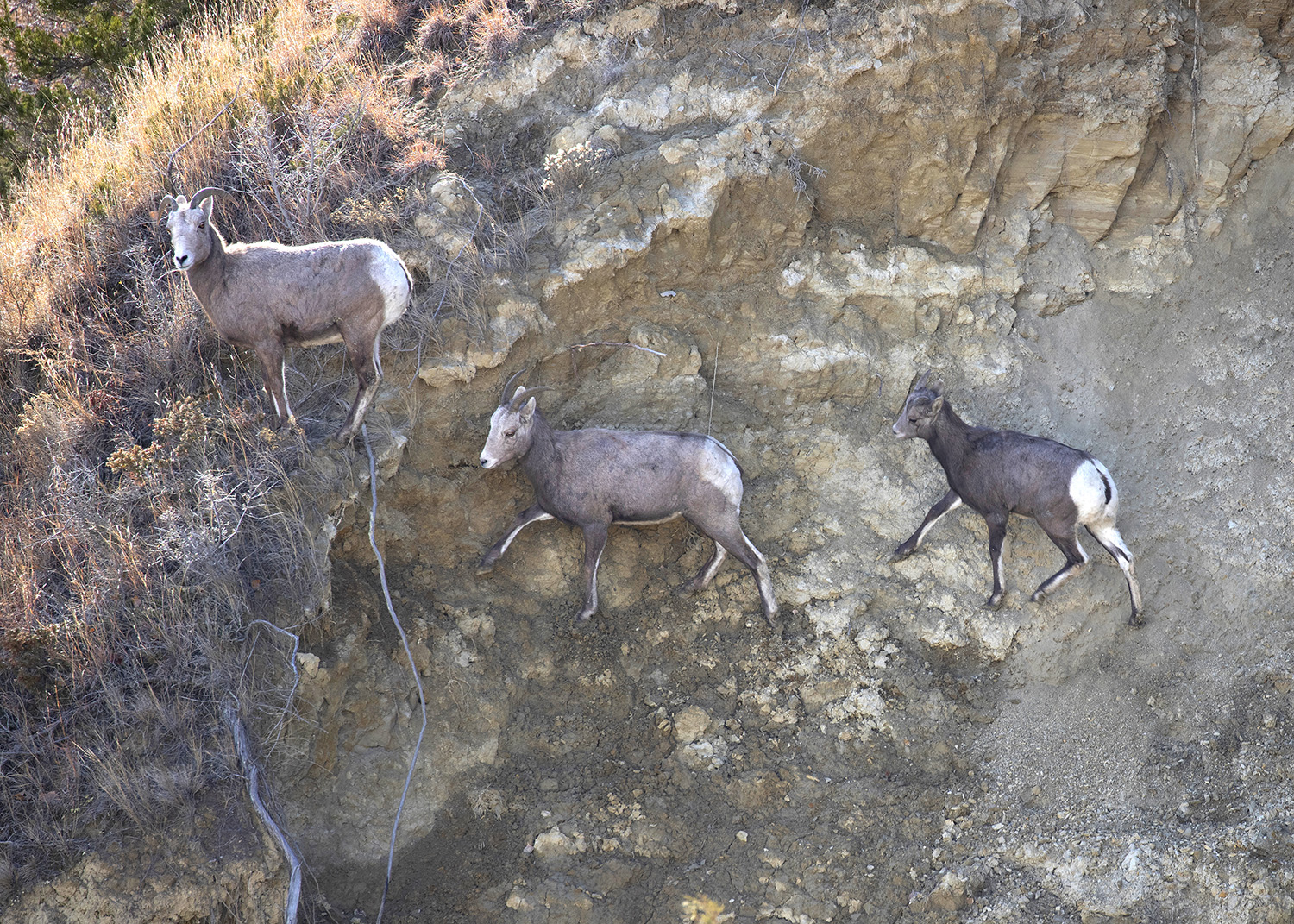
Rebuilding Bighorn Sheep in the Southern Badlands
About 20 bighorn sheep in western North Dakota roam the suitably rugged terrain south of Interstate 94, which runs east and west across the lower half of the state.
This small group of animals that inhabit places called Bullion Butte and Cliffs Plateau is what remains of a population that, in its heyday, numbered upwards of maybe 100 bighorns.
While bighorn sheep were reintroduced to the badlands north of I-94 in 1956, it wasn’t until the 1960s that these surefooted animals were captured and then released south of the interstate.
The history of bighorn sheep in the southern badlands is a roller coaster tale. Unfortunately, it’s been mostly down of late.
Brett Wiedmann, North Dakota Game and Fish Department big game management biologist, Dickinson, said there are a number of obstacles bighorn sheep must navigate during their lifetimes, and disease is one of the most troubling hurdles.
In the late 1990s, four separate bighorn populations were decimated by disease – two were wiped clean from the map – south of I-94.
While it’s likely that Game and Fish will use hunters who draw once-in-a-lifetime licenses for whatever number of rams that remain in unit B1, it hasn’t been decided what to do about the ewes.
“We want hunters to be the first option in harvesting the ewe population,” Wiedmann said. “What’s important is that we get them all and that’s the tricky thing.”
Casey Anderson, Department assistant wildlife division chief, said that while Game and Fish could use hunters to harvest the ewes, there are things to consider before issuing licenses. Such as, would the ewe bighorn sheep licenses be considered once-in-a-lifetime or not?
“I’ve talked to hunters who said they would harvest a ewe, thinking they would never get a ram license because they are so tough to come by,” Anderson said. “So, yeah, there are some people who would consider taking a ewe as being a once-in-a-lifetime deal. Of course, there are others who would want to hunt rams and nothing else.”
In 2019, a record 15,518 people applied for a bighorn sheep (ram) license in the badlands. The Game and Fish allocated just five licenses last fall, and one of those, authorized under North Dakota Century Code, was auctioned by the Midwest Chapter of the Wild Sheep Foundation.
Wiedmann said the bighorn sheep population north of the interstate, which includes approximately 30 animals in the North Unit of Theodore Roosevelt National Park, stands at about 330.
“It’s a very realistic possibility that we could eventually have 500 bighorn sheep in the northern badlands where there is a lot more suitable habitat than down south,” Wiedmann said. “And, you know, we’d be pretty happy if we ultimately had 75 bighorns south of the interstate.”
While the bighorn sheep population in western North Dakota has long provided limited hunting opportunities for more than 30 years, Anderson said Department wildlife managers understand the big picture when it comes to managing this unique species.
“It’s one of those species that people want to see in the wilds, but it’s a tall order in places like Montana and Wyoming,” Anderson said. “Yet, people have a pretty good chance of seeing one of these animals in the badlands.”


